Table of Contents
● Introduction
● Market overview
● Key technology and design innovations
● Top-selling models driving market trends
● Conclusion
Introduction
The latest trends and advanced technology in the hiking shoe market are changing quickly, which is the main reason behind the better growth and advanced technology. More and more individuals engage in hiking, climbing, trekking, and other outdoor activities, hence the need for better and superior hiking boots. Manufacturers are developing materials such as GORE-TEX fabric for waterproofing and ventilation, light constructions incorporating synthetic leather and EVA midsoles, and improved support components for challenging terrains. Further, there is a shift in designs that illustrate the use of the green aspect, with the brands incorporating materials and manufacturing processes that are friendly to the natural environment, given that customers increasingly demand green products. This interrelationship between technology and consumer requirements is defining the future of the hiking shoe market.
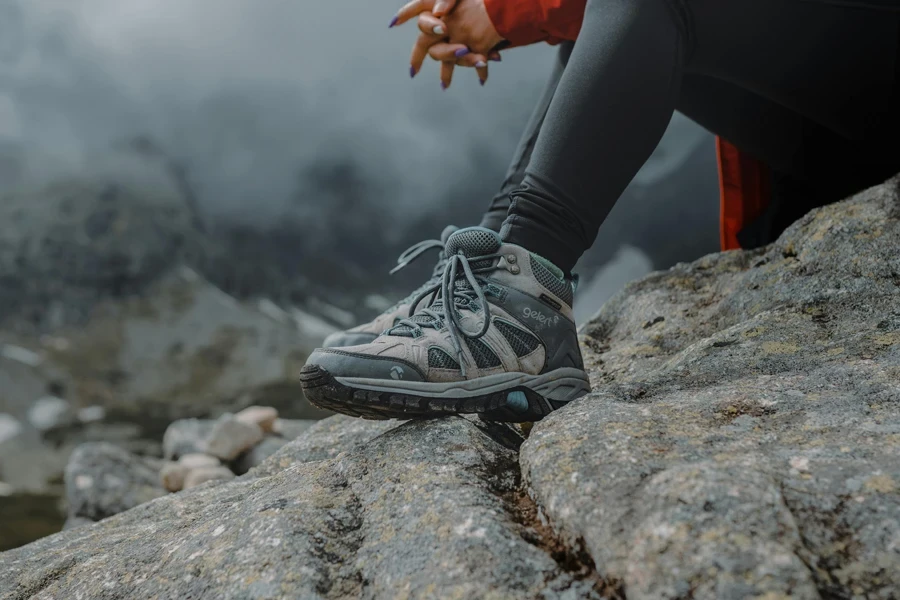
Market overview
The global hiking shoe market is experiencing rapid growth, with sales worldwide reaching $19.70 billion in 2023. As claimed by Fact. MR, the market is expected to increase at a compound yearly rate (CAGR) of 3.1% to reach $26.73 billion by 2033. This upward trajectory is highly driven by the increasing number of individuals participating in outdoor sports activities, such as hiking, biking, rock climbing, and mountain biking, which call for specialized footwear to protect feet from harsh terrains. The need for hiking footwear through direct-to-customer online channels is also rising. It is forecasted to grow at a CAGR of 5.1% by 2033, with key areas contributing to increased participation in outdoor activities and well-established manufacturing hubs.
The global hiking shoe market is experiencing rapid growth, with sales worldwide reaching $19.70 billion in 2023. As claimed by Fact. MR, the market is calculated to increase at a CAGR of 3.1% to reach 26.73 billion by 2033. This upward trajectory is highly driven by the increasing number of individuals participating in outdoor sports activities, such as hiking, biking, rock climbing, and mountain biking, which call for specialized footwear to protect feet from harsh terrains. The need for hiking footwear through direct-to-customer online channels is also rising. It is forecasted to grow at a CAGR of 5.1% by 2033, with key areas contributing to increased participation in outdoor activities and well-established manufacturing hubs.
The hiking footwear segment is estimated to reach $9.92 billion by 2033. According to Fact, significant markets are expected to achieve great value, driven by the increasing popularity of outdoor activities and the presence of top manufacturers. Regions with many mountain sites and hiking trails are anticipated to see significant market growth, supported by the rise of interested customers in adventure tourism. Market dynamics are also influenced by the growing preference for eco-friendly products, influencing manufacturers to make sustainable hiking footwear solutions. For example, many consumers are changing to eco-friendly products to lower their carbon footprint, propelling new vendors to focus on developing hiking and trail running shoes made out of sustainable materials—the coming together of consumer preferences and technological advancements molding a promising future for the hiking footwear market.
The market value of the hiking footwear segment is estimated to reach $9.92 billion by 2033. Significant markets are expected to achieve great value, driven by the increasing popularity of outdoor activities and the presence of top manufacturers. Regions with many mountain sites and hiking trails are anticipated to see significant market growth, supported by the rise of interested customers in adventure tourism. Market dynamics are also influenced by the growing preference for eco-friendly products, influencing manufacturers to make sustainable hiking footwear solutions. For example, many consumers are changing to eco-friendly products to lower their carbon footprint, propelling new vendors to focus on developing hiking and trail running shoes made of sustainable materials. The convergence of consumer preferences and technological advancements molding a promising future for the hiking footwear market.
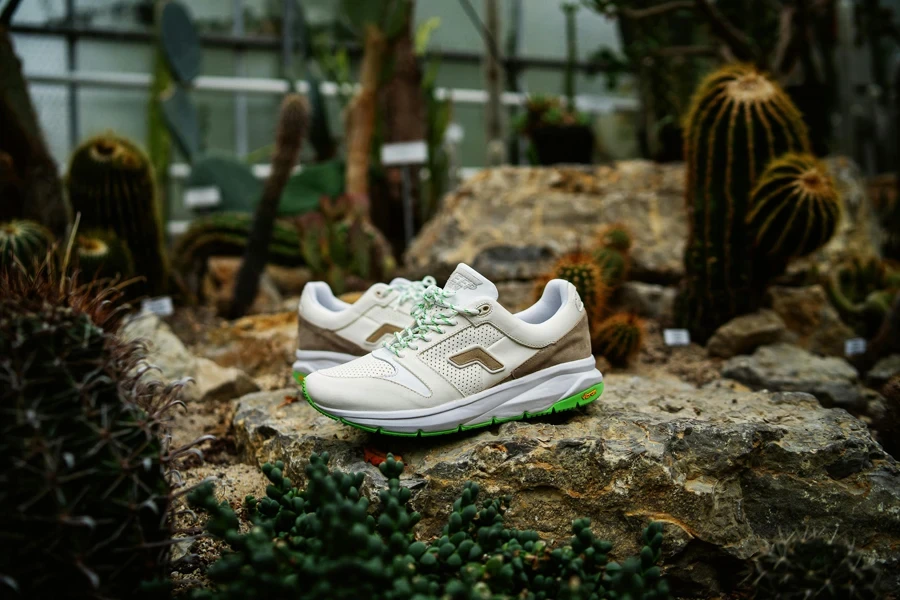
Key technology and design innovations
Waterproof and breathable materials
Breathable and waterproof materials are important for hiking shoes, improving performance and comfort. GOEW-TEX membranes are commonly used in hiking footwear to provide great waterproofing while maintaining breathability. These membranes permit sweat and moisture to exit the shoe, preventing blisters and discomfort during long hikes. All their hiking shoes have GORE-TEX, ensuring feet stay dry in wet conditions and allow breathability. This technology is very important for individuals who hike in unpredictable weather and different terrains.
Lightweight and durable construction
Progress in materials such as synthetic leather and EVA midsole have greatly impacted the making of hiking shoes, making them lighter and more durable. Artificial leather has the durability of traditional leather but with a fraction of the weight, making it more comfortable without minimizing protection. EVA(ethylene vinyl acetate) midsoles provide premium shock absorption and cushioning, minimizing the strain on hikers’ feet during long distances. Hiking life has shed light on the combination of these materials, resulting in comfortable and robust footwear that caters to modern hikers’ needs.
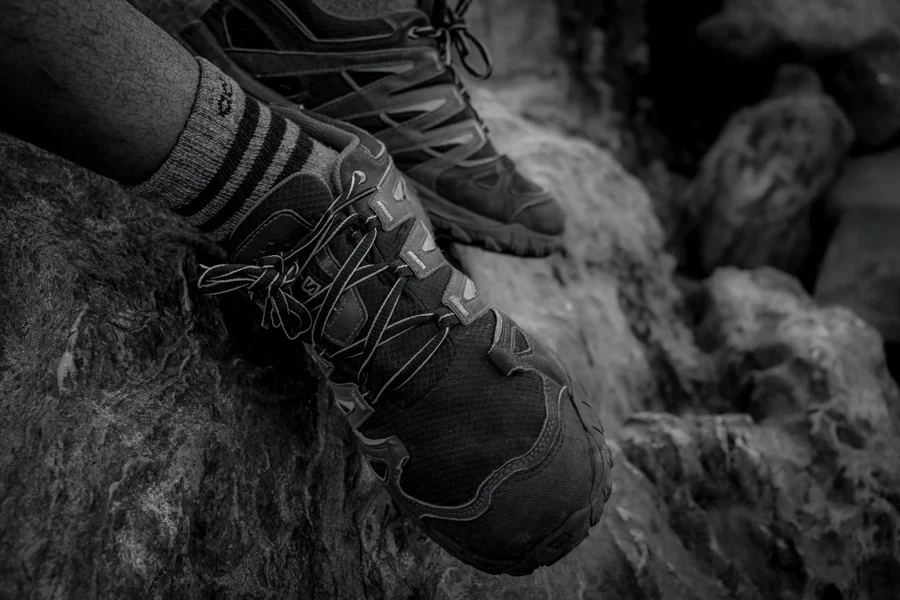
Support and stability enhancements
Alterations in stability and support are important for hiking footwear, especially for tackling rugged and uneven terrains. Modern hiking shoes include improved ankle support systems and shock absorption technologies; for instance, high-cut and mid-cut hiking boots offer improved ankle support, minimizing the risk of injuries on difficult trails. Attributes such as Vibram soles with tough treads ensure a firm grip on different surfaces, improving stability. In addition, improvements in midsole technologies help distribute weight evenly, giving a better balance and reducing fatigue during extended hikes.
Eco-friendly designs
The call for environmentally friendly products has made companies design environmentally friendly hiking footwear. Companies can also now involve eco-friendly materials and even manufacturing processes. For example, some hiking boots have been manufactured in a way that is easy to repair through part replacement to improve their durability. This way reduces waste and encourages a more sustainable consumption pattern. Brands are now adding recycled materials and ethical manufacturing methods to meet the increasing consumer demand for environmentally responsible products.
Custom fit and comfort technologies
Ensuring a custom fit and great comfort is a prime concern for hiking shoe manufacturers. Technologies like custom insoles and adaptive lacing systems help attain a personalized fit, enhancing performance and comfort. Brands use data-driven designs to make footwear that accommodates various foot sizes and shapes. Morden insoles and ergonomic designs are important for minimizing blisters and hotspots from occurring, making long hikes more amusing. The alterations cater to certain needs of hikers, ensuring that their footwear has the necessary comfort and support for outdoor activities that have a longer duration.
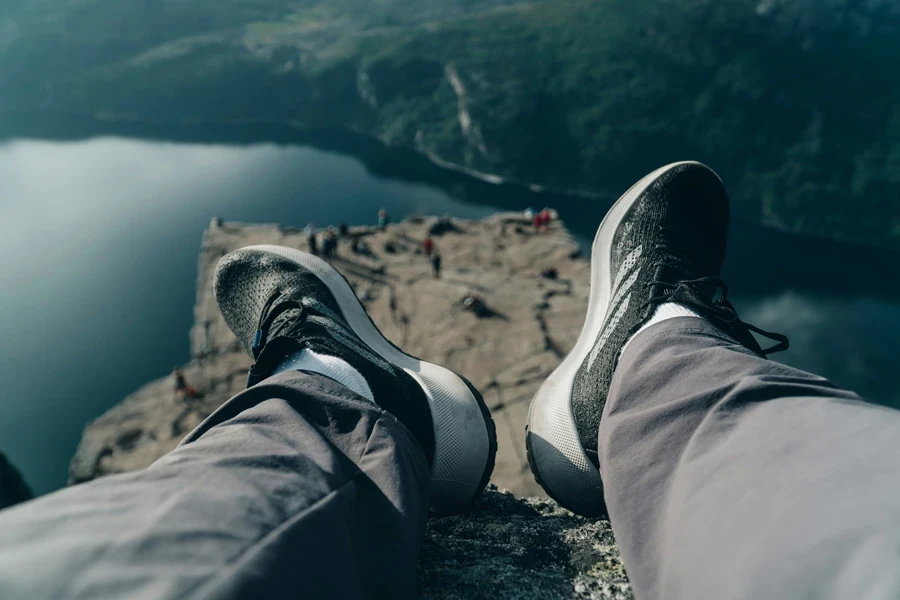
Top-selling models driving market trends
ALFA outdoor models
ALFA outdoor hiking shoes are famous for their great quality and performance, and their selling models like Eide Advance GTX, Gren Advance GTX, and Juvass A/P/S GTX are leading the market. These models have features like the GORE-TEX membranes for breathability and waterproofing. Vibram soles have a premium grip and are lightweight for better comfort. The Eide Advance GTX is for everyday use and light hikes, providing orthopedic support and excellent comfort. The Gren Advance GTX offers good ankle support, perfect for everyday trips on different terrains. The Juvss A/P/S GTX was developed with input from expert guides. To adhere to the hardest conditions, giving dedicated hikers maximum support and durability, for dedicated hikers.
Popular brands and their offerings
Many top brands dominate the hiking footwear market with their reliable performance and innovative designs. Adidas, New Balance, Merrell, Salomon, and Oboz are some of the top brands consumers like the most. These brands have incorporated advanced technologies and materials for the durability, comfort, and functioning of their hiking shoes. For example, Merrell’s Moab 2 Mid waterproof boots are known for their balance of flexibility and support, while Salomon’s X Ultra 3 GTX offers a lightweight design with great stability and grip. Oboz is known for its great focus on fit and comfort, Using data-driven designs to make footwear that can accommodate different foot shapes and hiking needs.
Consumer preferences
The requirement for comfort, design aesthetics, and durability shapes customer preferences in hiking shoes. Hikers particularly consider the aspect of waterproofing, breathability, the construction of light and thin material, and support to the ankle area. Durability is essential for consumers who want shoes that provide good cushioning and support and minimal risk of developing blisters or hotspots on their feet. Durability is also important because of the constant need to be on the grounds of rough terrains and the long hours of wearing hiking shoes. In addition, design aesthetics partakes, with buyers favoring brands with stylish and functional designs. This fusion of factors propels consumer choices and their influence on market trends.
Performance features
Performance features are a major selling point for premium hiking shoe models. Improved outsole designs with aggressive treads give excellent traction on different surfaces, improving stability and safety. Shock absorption technologies in midsoles minimize the impact on joints, making hikes with a longer duration more comfortable. Features like a fast lacing system and adjustable straps for a more secure fit make them adjust on the go. Materials that let air in and out and moisture-wicking linings help keep feet dry and comfortable., even during vigorous activities. These performance features are important for hikers who want high-functioning and reliable footwear.
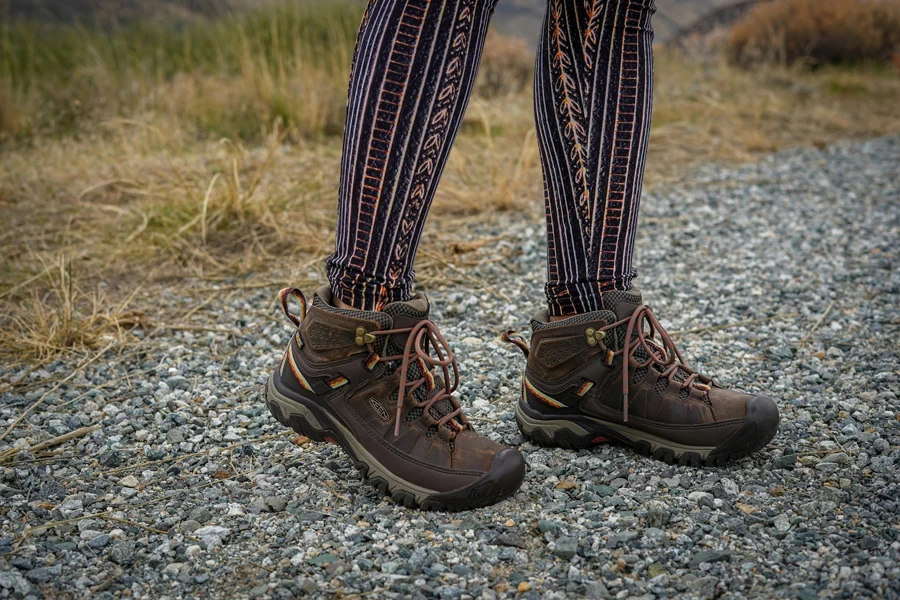
Innovative technologies
Innovative technologies in hiking shoes are continually changing, with brands incorporating new materials and design concepts to meet the buyers’ wants. Synthetic leathers, EVA midsoles, and improved textile technologies have revolutionized the hiking footwear market. Sustainable practices such as recycling material and using eco-friendly ways during production are also gaining traction. Brands focus on making multifunctional hiking shoes to cater to different hiking conditions, from casual day hikes to tough mountain treks. These innovations improve the performance and comfort of hiking footwear and align with the increasing buyer preferences for eco-friendly, responsible products.
Conclusion
Finding the right footwear for hiking is important for a better outdoor experience, comfort, and injury prevention. The hiking footwear market is excelling, propelled by innovative technologies like the GORE-TEX for breathability and waterproof, lightweight synthetic materials, and improved support features. The top-selling models from bands like New Balance, ALFA Outdoor Salomon, and Merrell offer a combination of comfort, durability, and design while meeting the requirements of different hikers. Manufacturers use environmentally friendly materials and production processes as buyers shift to eco-friendly products. Knowing these key elements helps you choose the perfect hiking footwear, making outdoor activities safer and more enjoyable.




